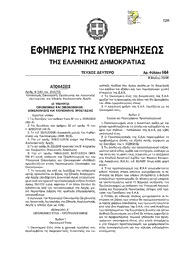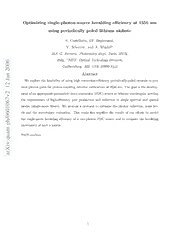
Scientific Credibility and Technical Standards in 19th and early 20th century Germany and Britain PDF
Preview Scientific Credibility and Technical Standards in 19th and early 20th century Germany and Britain
.9Lrchimedes 1996 YLrcfiimedes NEW STUDIES IN THE HISTORY AND PHILOSOPHY OF SCIENCE AND TECHNOLOGY VOLUME 1996 EDITOR JED Z. BUCHWALD, Bern Dibner Professor of the History of Science at MIT, and Director of The Dibner Institutefor the History of Science and Technology, Cambridge, MA, USA. ADVISORY BOARD HENK Bos, University of Utrecht MORDECHAI FEINGOLD, Virginia Polytechnic Institute ALLAN D. FRANKLIN, University of Colorado at Boulder KOSTAS GAVROGLU, National Technical University of Athens ANTHONY GRAFTON, Princeton University FREDERIC L. HOLMES, Yale University PAUL HOYNINGEN-HUENE, University of Konstanz EVELYN Fox KELLER, MIT TREVOR LEVERE, University of Toronto JESPER LUTZEN, Copenhagen University WILLIAM NEWMAN, Harvard University JiiRGEN RENN, Max-Planck-Institutfur Wissenschaftsgeschichte ALAN SHAPIRO, University of Minnesota NANCY SIRAISI, Hunter College of the City University of New York MERRITT ROE SMITH, MIT NOEL SWERDLOW, University of Chicago .9Lrcfiimeaes, which will initially appear once a year, has three fundamental goals: to further the integration of the histories of science and technology with one another; to investigate the technical, social and practical histories of specific developments in science and technology; and finally, where possible and desirable, to bring the histories of science and technology into closer contact with the philosophy of science. To these ends, each volume will have its own theme and title and will be planned by one or more members of the Advisory Board in consultation with the editor. Although the volumes have specific themes, the series itself will not be limited to one or even to a few particular areas. Its subjects include any of the sciences, ranging from biology through physics, all aspects of technology, broadly construed, as well as historically-engaged philosophy of science or technology. Taken as a whole, .9Lrcfiimeies will be of interest to historians, philosophers, and scientists, as well as to those in business and industry who seek to understand how science and industry have come to be so strongly linked. .9Lrchimedes 1996 New Studies in the History and Philosophy of Science and Technology Scientific Credibility and Technical Standards in 19th and early 20th century Germany and Britain edited by JED Z. BUCHWALD MITand The Dibner Institutefor the History of Science and Technology, Cambridge, MA, USA 1IIiI... " KLUWER ACADEMIC PUBLISHERS DORDRECHT / BOSTON / LONDON A C.I.P. Catalogue record for this book is available from the Library of Congress. ISBN-13: 978-0-7923-4762-0 e-ISBN-13: 978-94-009-1784-2 DOl: 10.1007/978-94-009-1784-2 Published by Kluwer Academic Publishers, P.O. Box 17,3300 AA Dordrecht, The Netherlands. Sold and distributed in the U.S.A. and Canada by Kluwer Academic Publishers, 101 Philip Drive, Norwell, MA 02061, U.S.A. In all other countries, sold and distributed by Kluwer Academic Publishers, P.O. Box 322, 3300 AH Dordrecht, The Netherlands. Printed on acid-free paper Also published in 1996 in hardbound edition in the series Archimedes, Volume 1996. All Rights Reserved © 1997 Kluwer Academic Publishers No part of the material protected by this copyright notice may be reproduced or utilized in any form or by any means, electronic or mechanical, including photocopying, recording or by any information storage and retrieval system, without written permission from the copyright owner. TABLE OF CONTENTS JED Z. BUCHWALD / Introduction vii MYLES W. JACKSON / Buying the dark lines of the solar spectrum: Joseph von Fraunhofer's standard for the manufacture of optical glass 1 STUART M. FEFFER / Ernst Abbe, Carl Zeiss, and the transformation of microscopical optics 23 DAVID CAHAN / The Zeiss Werke and the ultramicroscope: the creation of a scientific instrument in context 67 KATHRYN M. OLESKO / Precision, tolerance, and consensus: local cultures in German and British resistance standards 117 SUNGOOK HONG / Syntony and credibility: John Ambrose Fleming, Guglielmo Marconi, and the Maskelyne affair 157 Subject Index 177 Index of Names 181 JED Z. BUCHWALD INTRODUCTION ARCHIMEDES, which will initially appear once a year, has three fundamental goals: to further the integration of the histories of science and technology with one another; to investigate the technical, social and practical histories of specific developments in science and technology; and finally, where possible and desirable, to bring the histories of science and technology into closer contact with the philosophy of science. To these ends, each volume will have its own theme and title and will be planned by one or more members of the Advisory Board in consultation with the editor. This first volume exemplifies two of our three goals, for the articles in it explicitly and intentionally cross boundaries between science and technology, and they also illuminate one another. The first three contributions concern optics and industry in 19th century Germany; the fourth concerns electric standards in Germany during the same period; the last essay in the volume examines a curious development in the early history of wireless signaling that took place in England, and that has much to say about the establishment and enforcement of standard methods in a rapidly-developing technology that emerged out of a scientific effect. German optical products reigned supreme at the end of the 19th century, by which time the Zeiss name had become nearly synonymous with scientifically designed and superbly crafted devices. The rise to preeminence of the Zeiss Werke in the 1870s was itself preceded by the remarkable reputation of German glass and lenses that were first produced at Joseph von Fraunhofer's Optical Institute in the 1820s. These developments are connected to one another by more than their having occurred in German-speaking lands, for in both cases successful industrialists based assertions concerning the particular superiority of their products on science. Towards the end of the century this binding between science and industry had become exceptionally tight, as the Zeiss Werke sought to capitalize on scientific effects and interests in order to produce extraordinary and unusual instruments that displayed the power and precision of the Werke's design and manufacturing capabilities. Myles Jackson's Fraunhofer and Stuart Feffer's Ernst Abbe of the Zeiss Werke, though very different from one another in many ways, nevertheless share one particularly striking trait: both of them relied on scientific arcana to make claims for the goodness or aptness of their wares. Few had done so before them, but what makes the stories told here especially compelling is rather the character of their claims than that they were made at all. In Jackson's account we find Fraunhofer's line spectra, which Fraunhofer had first extracted with great skill from sunlight, and about which he alone had, at first, special knowledge, becoming effective tools for selling his lenses. Ernst Abbe, accord ing to Feffer, turned a scientifically-problematic account of wave optics into an advertisement for his microscopes. Where the one marshaled an observational Vll J.z. Buchwald (ed.), Scientific Credibility and Technical Standards in 19th and early 20th Century Germany and Britain, vii-ix. © 1996 Kluwer Academic Publishers. viii JED Z. BUCHWALD and (for a brief moment) proprietary scientific novelty for manufacturing and marketing ends, the other used difficult but impressive-sounding scientific theory to transmute an industrial necessity into a virtue for creative advertis ing. Neither Fraunhofer nor Abbe was being the least duplicitous in what each of them did; both sought, admired and used scientific credibility where they could, and in so doing turned it into a fungible commodity. David Cahan provides a thoroughly contextual, highly detailed account of the development early in the 20th century of the ultramicroscope at the Zeiss Werke, a device that could image colloidal particles lying below the theoretical limits of microscopical resolution that had previously been calculated (in quite different ways) by both Abbe and Hermann von Helmholtz. Here we find the Zeiss Werke taking advantage ofthe opportunity to, in Cahan's words, "explore previously uninvestigated or incompletely investigated scientific and technical ideas and fields that might contain sufficient potential for technological change and industrial profit". As in the case of Feffer's Abbe, here too the concepts and tools of wave optics entered directly into industrial practice. There is however a signal difference between the two situations. In the case of Abbe's light microscope, Feffer remarks, "optical theory as publicly employed by Abbe had far more to do with selling microscopes than with building them". The ultramicroscope, on the other hand, directly and explicitly deployed scattering and diffraction effects to detect sub-visible particles. Whereas, one might say, scientific strictures and effects were not themselves directly central to the industrial practices embodied in the Zeiss microscopes produced under Abbe, they had certainly become so a generation later for constructing the ultra microscope. Olesko's piece concerns the complicated scientific, cultural, and industrial issues that arose in the setting of electric standards in Germany, and, in particular, with the setting of a value for the ohm. Perhaps the most striking of the many aspects of standards work that Olesko unveils is the arresting difference between German and British sensibilities. In Britain, Olesko notes, individual differences in measurements were easily smoothed over, and error analysis of any kind was strongly downplayed. In Germany, by contrast, individual differences were made a very great deal of indeed, and discussions of error were common and contentious. In Olesko's words, German "precision represented an agreement between individuals, not among them as a single collective result". The last paper in this volume, by Sungook Hong, is set entirely in England and tells an extraordinary story which, despite the locus, connects strongly to many of the themes set out in the other contributions. In the early 1900s, we learn from Hong's account, an attempt by Marconi and his technical adviser, John Ambrose Fleming, to demonstrate in public the efficacy of his wireless system was nearly undone by Nevil Maskelyne. Reputations suffered, tempers flared, credibility was angrily challenged, and the Marconi system, with its basis in tuned transmission and reception, was called into question. Indeed, Hong shows that much more than pure technical superiority was at issue in this INTRODUCTION ix affair. In order for the Marconi system to realize in full its technological potential it had to colonize the entire technical terrain; it could not reign successfully in a world of multiple devices. Maskelyne's tricks brought this directly into the open (and questioned as well Marconi and Fleming's moral character). Maskelyne felt he had used "the only possible means of ascertaining fact which ought to be in the possession of the public". Fleming called the effort an attempt to "wreck the exhibition". Both were correct, because each envisioned a unique economic and technical world. Where Maskelyne de manded an open universe of competing devices, Marconi and Fleming required a closed one that would be utterly dominated by a single type of equipment. Historical work over the last few decades has shown that technology cannot be characterized simply, or even usually, as applied science. The beliefs, the devices, and the natural objects that are created or discovered by scientists often play altogether minor roles in the construction of technologies. Taking this realization as a given, the essays in this first volume of ARCHIMEDES effectively argue that we must now seek to go beyond it; we must begin also to think carefully about the roles that science actually did play when it was explicitly deployed by technologists. We need to ponder the implications of these stories and others for the real, historically-grounded connections that exist between scientific entities, the devices that make use of them, and the technological world. It seems to me that we should look as well for a novel philosophy of science, one that probes the nature of scientific work by grappling forthrightly and deeply with how it comes about that this particular form of human activity manages with such fecund regularity to produce novel entities that are inevitably bound to novel artifacts. Perhaps we need rather a philosophy of the "techno-scientific" than of either science or of technology alone. MYLES W. JACKSON BUYING THE DARK LINES OF THE SOLAR SPECTRUM: JOSEPH VON FRAUNHOFER'S STANDARD FOR THE MANUFACTURE OF OPTICAL GLASS Joseph von Fraunhofer is of interest to physicists and historians of science because of his 'discovery' of the dark lines dissecting the solar spectrum, which now bear his name, and his advances in the manufacture of optical lenses. Previously, scholars discussing Fraunhofer's merits have erroneously placed him at the forefront of a long tradition of spectroscopy, or have portrayed him I as the 'father of German optics' in attempting to argue for a Germanic hegemony in both the physical sciences and optical industry. 2 In this paper I shall argue that Fraunhofer's work on the dark lines of the spectrum was neither the culmination of any theoretical outlook on the nature of light nor an early effort in spectroscopy. Rather, it represented the labor of a self-educated artisan who wished to perfect the construction of achromatic lenses for astronomical instruments such as telescopes and heliometers, as well as ordnance surveying instruments such as theodolites. Fraunhofer's early work - including an early and influential experiment (discussed below) involving six lamps and solar light - was not an attempt to vindicate or debunk either the wave or corpuscular theory of light, despite the fact that his experiments most likely date from late 1813 to early 1815, precisely the period when British and French physicists were embroiled in intense debates on the nature of light. 3 Although Fraunhofer was to side with the wave theorists after his work on diffraction gratings in the early 1820s, he was never able to explain the dark lines. More than anything else, Fraunhofer's work was based on, and bound to, his technical mastery of artisanal knowledge and skill. Fraunhofer's knowledge of optics, reflected in both the experimental design and in the calculation of the refractive indices for his glass prism samples, was quite basic. Indeed, for such purposes one only requires knowledge of (and practical skill in handling) Snell's Law for refraction, as well as basic trigonometric relations.4 Fraunhofer deployed the law and its implications in his everyday work with glass prisms. Precisely because Fraunhofer's contribution to physical optics emerged out of his manual dexterity and artisanal skill and was not based on any theory of the nature of light, the British could not merely resort to optical theory in order to reconstruct those skills. Indeed, the personal, uncommunicated character of Fraunhofer's artisanal knowledge guaranteed his Optical Institute's hegemony. The first portion of my essay analyzes Fraunhofer's extremely precise method for calculating refractive and dispersive indices of achromatic glass. Before his work, the determination of dispersive indices of glass prisms was restricted to a rather imprecise procedure whereby the optician would take the mean of the refraction of the extreme red and violet rays. This two-ray method had been necessary since before Fraunhofer's glass manufacturing techniques, prisms Jz. Buchwald (ed.), Scientific Credibility and Technical Standards in 19th and early 20th Century Germany and Britain, 1-22. © 1996 Kluwer Academic Publishers.
The list of books you might like

Atomic Habits James Clear

Haunting Adeline

The Subtle Art of Not Giving a F*ck

Do Epic Shit
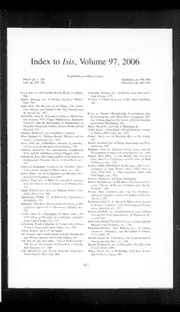
Isis 2006: Vol 97 Index & Table of Contents

The Batrisini of Sri Lanka (Coleoptera: Staphylinidae: Pselaphinae)
![Carillon, [Spring 2006] book image](https://cdn.pdfdrive.to/media/content/thumbnails/4a9d8608-f5cb-4569-86da-81adbdb75f38.webp)
Carillon, [Spring 2006]
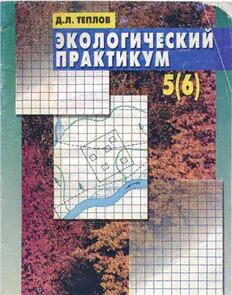
Экологический практикум. 5(6) класс

DTIC ADA275521: CBSD: The Celestial Background Scene Descriptor
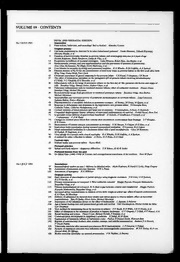
Archives of Disease in Childhood 1993: Vol 69 Table of Contents
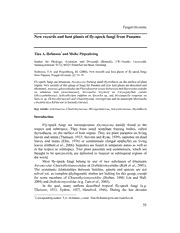
New records and host plants of fly-speck fungi from Panama
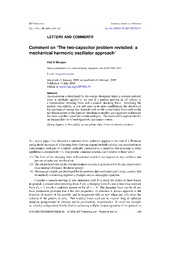
DTIC ADA550999: Comment on The Two-Capacitor Problem Revisited: A Mechanical Harmonic Oscillator Approach
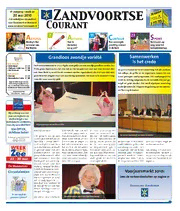
Zandvoortse Courant 2010 week 20
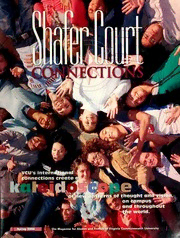
Shafer Court connections

Bezgrješna

Odisha Gazette, 2008-01-09, No. 227
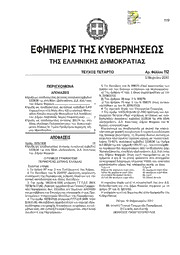
Greek Government Gazette: Part 4, 2010 no. 112

Anaphylaxis
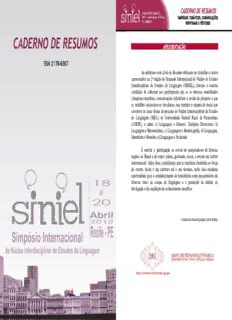
caderno de resumos caderno de resumos

Sus

cai altare 2018 libretto
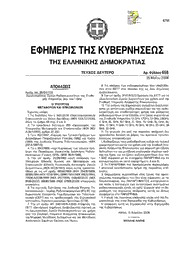
Greek Government Gazette: Part 2, 2006 no. 658
